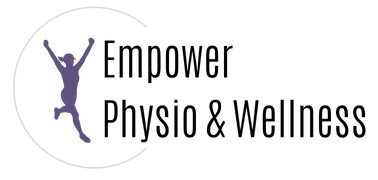Whether it’s your goal to run a 5k or half marathon, lift heavy weights, complete a triathlon, or be fit for life, you probably want to know what kind of workouts to do and how many days to train. That’s all very important, but there’s something even more important than the training schedule: how you rest. That’s right! To get stronger, faster, and have better endurance, you need rest to complement your workouts. For my fellow over-achievers, this may be a tough pill to swallow, so let’s break down how many rest days per week you need and why they are so important.
What happens to your body during a workout?
There are two main types of workouts: cardiovascular training and strength training. Both are important for overall health and fitness and need to be incorporated at varying capacities depending on what you’re training for.
In cardiovascular workouts, your heart rate increases to pump more blood to your muscles. As you do cardio consistently, your heart gets more efficient at pumping blood, meaning over time, it doesn’t have to beat as often to move the same amount of blood throughout your body.
Similarly, in strength training, you expose your muscles to heavy loads so they can adapt and get stronger. When you lift heavy weights in a workout, your muscles tear a little bit, signaling to your body to repair them…and then some. Our bodies always like to be prepared so when this repair process happens, the muscles are readying themselves to lift heavy weights in the future.
As your heart and muscles become more efficient, your endurance improves, making longer or harder workouts feel easier. The more you train, the more your body responds and the less you feel like your heart is going to explode out of your chest or your muscles are going to collapse (or at least not as much!).
More is better, isn’t it?
You may be thinking, “Wow the body is awesome at adapting to cardio and strength workouts! I’ll train even harder to get better results.” Yes, the body is amazing, but the last part of that statement is false. Too much of a good thing is not productive. The most important thing your body needs after a workout, especially if you’re in a long training cycle, is rest. This allows your body to get more efficient at pumping blood, using energy, and building muscle.
Why? Those effects of exercise we just talked about don’t happen during the workout. They happen 24-48 hours after the workout. If you’re exercising too much, your body gets interrupted in the adaptation process and all those wonderful benefits take even longer to achieve. The other problem with overtraining is that it puts your body under prolonged stress, increasing the cortisol you release. Cortisol suppresses growth hormones that contribute to muscle development. It’s like hitting your body while it’s down…not good!
How many rest days between workouts do I need and how should I structure my training?
The most important way to rest well is to sleep well. There are so many amazing processes the body undergoes during sleep that help it continue to work well and recover from the day’s activities. Sleep is arguably the most important aspect of health (stay tuned later this month for more on this).
Aside from sleep, rest does not necessarily mean being sedentary. There are a few different ways to incorporate rest into your training program. One option is to vary the workouts you do each day to rest a specific body part or system. For example, if you run Monday, Wednesday, and Friday, you have 2 days between each run. You can then lift weights, do a dance class, ride your bike, or swim on Tuesday and Thursday. This is called cross training.
Another way to rest specific body parts in a more strength-focused plan is to target different muscle groups on different days. For example, if you lift weights for your upper body Monday and Thursday, you can target your lower body Tuesday and Friday, and jog or spin Wednesday.
Active recovery offers an alternative way to build in rest. On active recovery days, you perform an activity at a much lower intensity than you would on a typical workout day. This could be a walk around your neighborhood, going on a hike, or doing a yoga class. These activities keep your body moving in a gentle way that still allows for the recovery process to happen.
What are some examples of how to structure a workout plan?
How you structure your training depends largely on your fitness level and goals. Here’s a breakdown by activity to give you a rough idea.
Running
- 3-4 run days
- 1-2 strength days
- 1 cross-training day
- 1 active recovery or rest day
Building strength
- 4 lifting days
- 1 cardio day
- 1 yoga or mobility day
- 1 active recovery or rest day
General fitness
There can be a lot of variability depending on what types of activity you enjoy. Making it fun is the most important aspect of exercising for life! For more information, check out my post on the best weekly routine for optimal movement.
I hope you have a better understanding of the importance of recovery and how many rest days per week you need based on your lifestyle. Want a more customized training plan to meet your fitness goals? Contact us.



